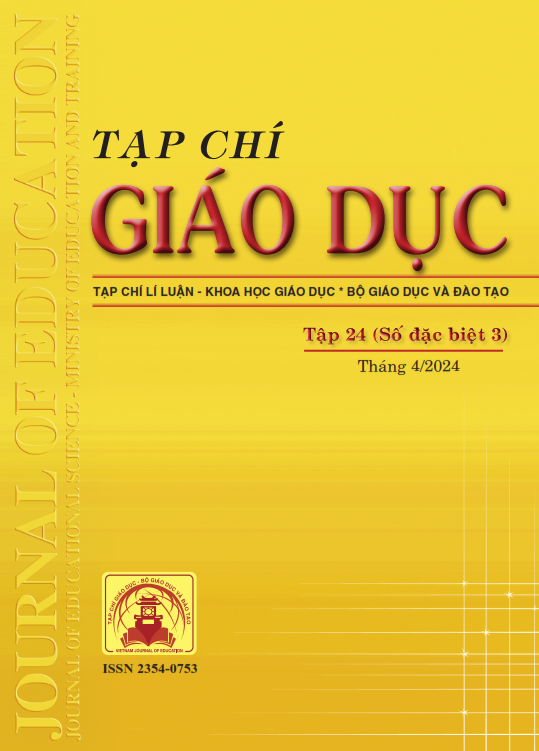Một số mô hình đánh giá, can thiệp liên ngành dành cho trẻ rối loạn phổ tự kỉ trên thế giới
Tóm tắt
Autism spectrum disorder is a complex developmental disorder of the brain, characterized by difficulties with communication and social interaction, as well as restricted interests and repetitive behavior. For effective assessment, intervention, and education of children with autism spectrum disorder, interdisciplinary coordination is required - that is, the combination of many resources and cooperation between experts in many other fields. such as: doctors, psychologists, neurotherapists, medical staff, special education teachers; language expert; behavioral experts; social worker; family and community... The article mentions a number of interdisciplinary assessment and intervention models for children with autism spectrum disorders in the world. The research results are lessons learned in building interdisciplinary assessment and intervention models for children with autism spectrum disorders in Vietnam.
Tài liệu tham khảo
Autism Awareness Australia (2014). Helping children with autism. https://www.autismawareness.com.au/financial-support/hcwa/
Centers for Disease Control (2014). Prevalence of autism spectrum disorder among children aged 8 years-autism and developmental disabilities monitoring network, 11 sites, United States, 2010, Morbidity and mortality weekly report. Surveillance summaries (Washington, DC: 2002). 63(2), pp. 1.
Centers for Disease Control and Prevention (2018). Autism Spectrum Disorder (ADS). Accessed 10/03/2024, from https://www.cdc.gov/ncbddd/autism/index.html.
Đào Thị Thu Thủy (2016). Trẻ rối loạn phổ tự kỉ và hỗ trợ trẻ hòa nhập cộng đồng. Tạp chí Khoa học giáo dục, Viện Khoa học Giáo dục Việt Nam, 132, 20-22.
Health and Social Care Board (2011). Six Steps of Autism Care. Regional Autistic Spectrum Disorder Network for Northern Ireland, Northern Ireland.
Hodges, H., Fealko, C., & Soares, N. (2020). Autism spectrum disorder: definition, epidemiology, causes, and clinical evaluation. Translational pediatrics, 9(Suppl 1), S55.
Malaysia Health Technology Assessment Section (2014). Management of Autism Spectrum Disorder in Children and Adolescents. Ministry of Health Malaysia, Putrajaya, Malaysia.
Myers, S. M., & Johnson, C. P. (2007). Management of children with autism spectrum disorder. Pediatrics, 120(5), 1162e1182. http://dx.doi.org/10.1542/peds.2007-2362
Nguyễn Thị Hoa, Hạ Bá Thùy Dung (2021). Trẻ rối loạn phổ tự kỉ có ngôn ngữ nói tối thiểu: thách thức trong trị liệu và giáo dục. Tạp chí Khoa học, Trường Đại học Sư phạm Hà Nội: Khoa học giáo dục, 66(4), 121-130.
Nguyễn Thị Hương Giang, Trần Thị Thu Hà (2008). Nghiên cứu xu thế mắc và một số đặc điểm dịch tễ học của trẻ tự kỉ điều trị tại bệnh viện nhi Trung ương giai đoạn 2000 đến 2007. Tạp chí Y học thực hành, 4, 104-107.
Phạm Toàn (2021). Hướng dẫn chẩn đoán tâm lí tâm thần theo DSM-5. NXB Trẻ.
Strunk, J., Leisen, M., & Schubert, C. (2017). Using a multidisciplinary approach with children diagnosed with autism spectrum disorder. Journal of Interprofessional Education & Practice, 8, 60-68.
Trần Văn Công, Nguyễn Thị Hoàng Yến (2017). Tỉ lệ trẻ rối loạn phổ tự kỉ: Những con số thống kê. Tạp chí Khoa học, Trường Đại học Sư phạm Hà Nội: Khoa học Giáo dục, 62(9AB), 322-330.
University of Vermont, PACER Center (2008). Critical elements of collaboration (PCL Module 3). Slide 7.
Wallace, S., Fein, D., Rosanoff, M., Dawson, G., Hossain, S., Brennan, L., ... & Shih, A. (2012). A global public health strategy for autism spectrum disorders. Autism Research, 5(3), 211-217.
World Health Organization (2010). Framework for action on interprofessional education and collaborative practice. World Health Organization.
Đã Xuất bản
Cách trích dẫn
Số
Chuyên mục
Giấy phép

Tác phẩm này được cấp phép theo Ghi nhận tác giả của Creative Commons Giấy phép quốc tế 4.0 .












